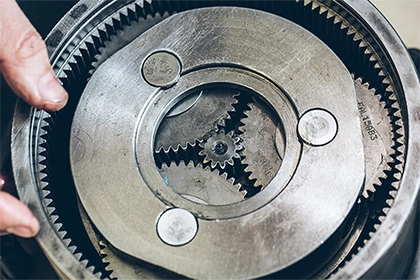
How does an induction motor develop torque?
An induction motor develops torque by inducing current to the rotor, which is proportional to the differential speed of the rotor and the rotating magnetic field in the stator. For NEMA design B motors the differential speed (called slip) is between 1% an
An induction motor is a type of electric motor that uses electromagnetic induction to convert electrical energy into mechanical energy. In an induction motor, the stator, which is a stationary component that consists of a series of copper or aluminum coils, is mounted on the outer shell of the motor and connected to the electrical power supply. When an electrical current flows through the stator coils, it creates a magnetic field that extends into the rotor, which is a moving component that is mounted on the motor's shaft.
The rotor is typically made up of a series of conductive bars that are connected to a series of short-circuited end rings. When the rotor is placed in the magnetic field produced by the stator, it experiences a force known as the "rotor reaction," which causes it to rotate. This rotational motion is transferred to the motor's shaft, which can then be used to drive a load.
The torque developed by an induction motor is a measure of the rotational force produced by the motor. It is determined by the interaction between the magnetic fields of the stator and rotor, as well as the speed of the rotor and the strength of the stator's magnetic field.
To understand how an induction motor develops torque, it is helpful to consider the basic operating principle of this type of motor. As mentioned above, an induction motor uses electromagnetic induction to generate rotational motion, which is accomplished by creating a magnetic field around a coil of wire.
In an induction motor, the magnetic field is produced by the stator, which is a stationary component that consists of a series of copper or aluminum coils. When an electrical current flows through the stator coils, it creates a magnetic field that extends into the rotor, which is a moving component that is mounted on the motor's shaft.
The rotor is typically made up of a series of conductive bars that are connected to a series of short-circuited end rings. When the rotor is placed in the magnetic field produced by the stator, it experiences a force known as the "rotor reaction," which causes it to rotate. This rotational motion is transferred to the motor's shaft, which can then be used to drive a load.
The key to the operation of an induction motor is the interaction between the magnetic fields of the stator and rotor. The stator's magnetic field induces a current in the rotor, which in turn creates its own magnetic field that interacts with the stator's field. This interaction causes the rotor to rotate, generating torque. The amount of torque produced by the motor is dependent on the strength of the stator's magnetic field and the amount of current induced in the rotor.



Leave a Comment